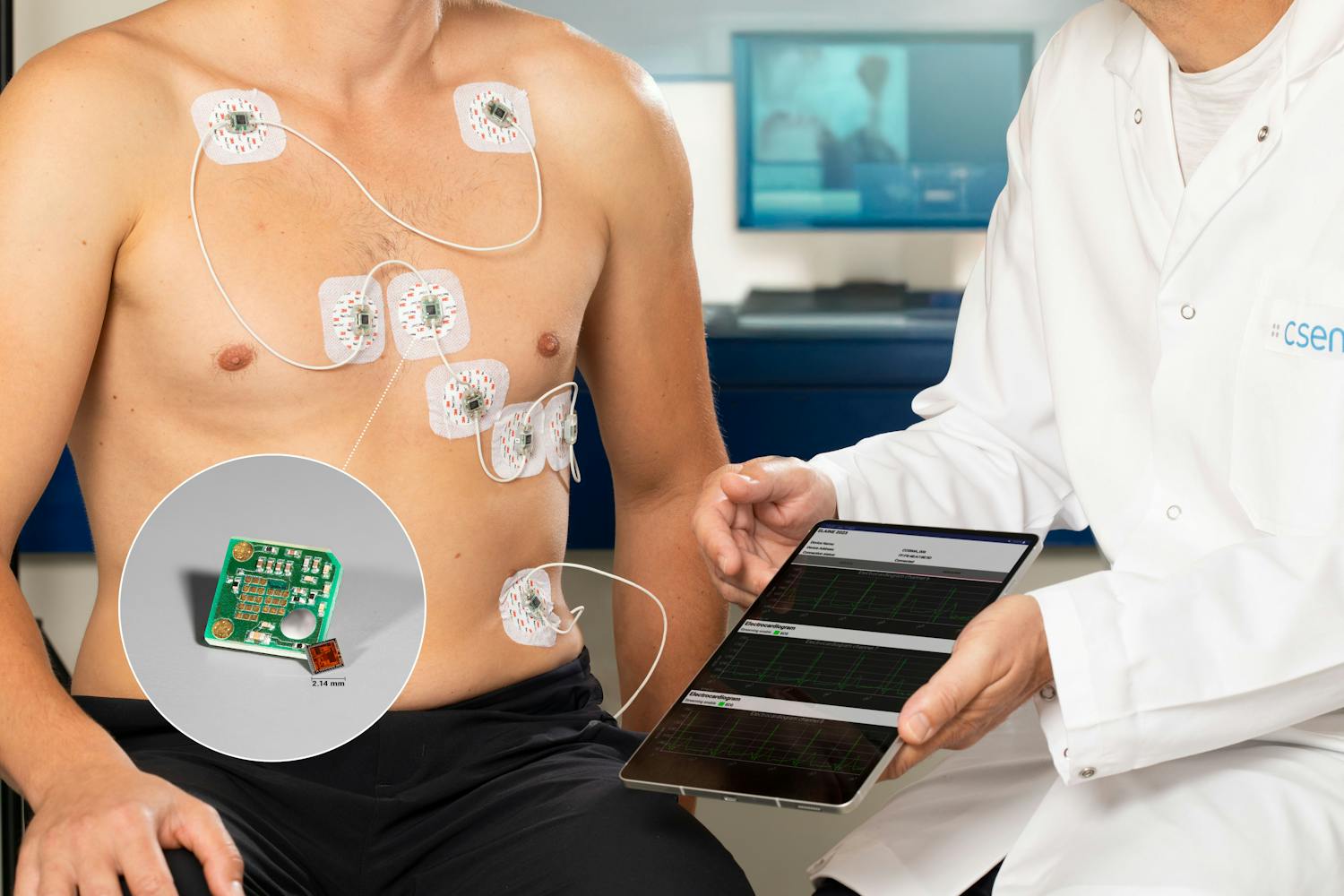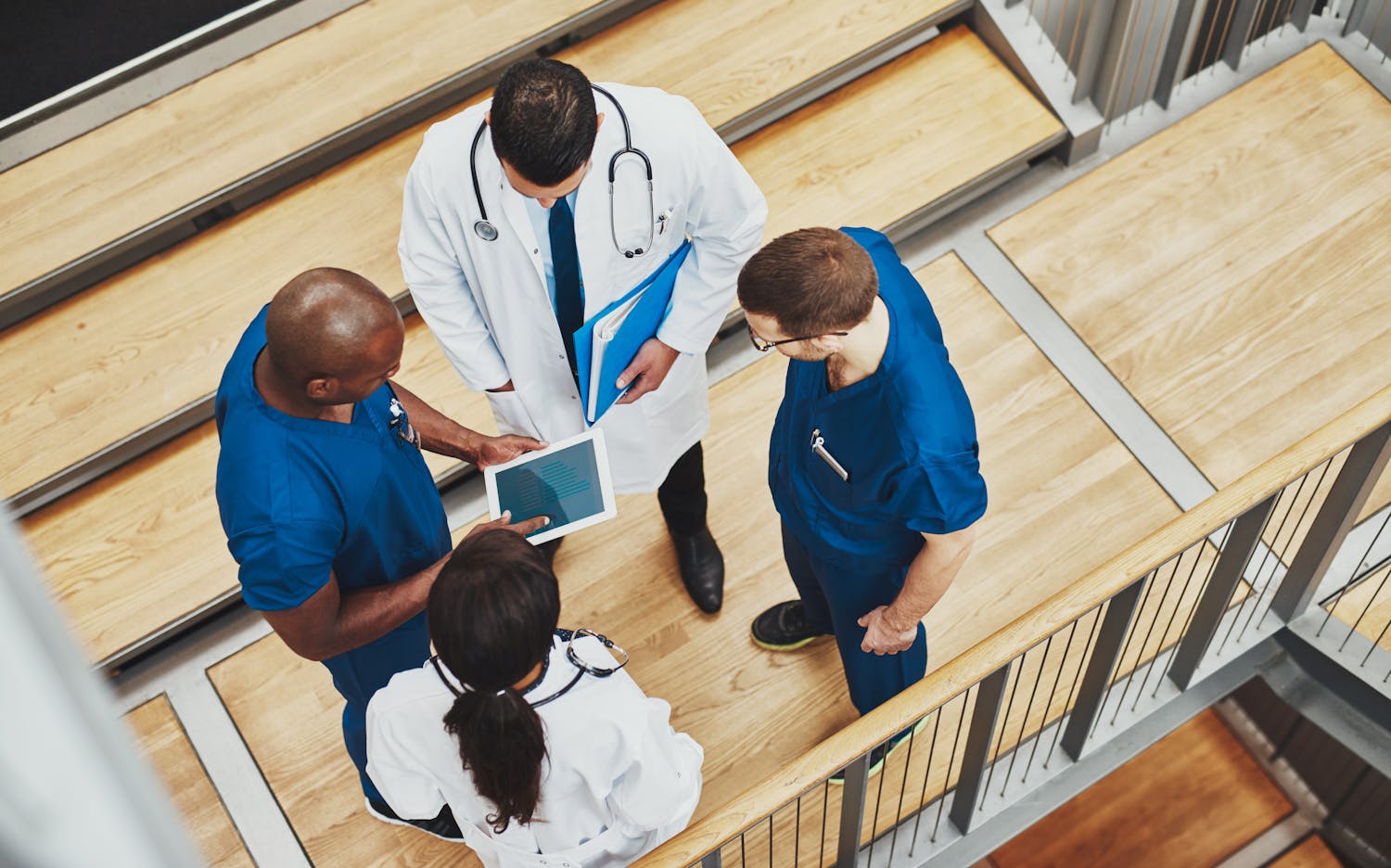Le CSEM fait partie de l'écosystème Medtech bernois
Pour soutenir le canton de Berne à devenir un pôle d'innovation de premier plan dans le domaine des technologies médicales d'ici 2030, le groupe Insel, l'université de Berne et le CSEM collaborent dans le cadre de projets communs de recherche et développement. Cette initiative s'appelle Bern Medtech Collaboration Call.

Façonnez l'avenir des soins de santé et de la technologie médicale
D'ici 2030, le canton de Berne veut s'établir comme un site médical de premier plan au niveau international. Pour y parvenir, le groupe Insel, l'Université de Berne et le Centre d'innovation technologique CSEM unissent leur expertise et collaborent dans le cadre de projets de recherche et de développement communs afin de renforcer la compétitivité des entreprises industrielles et des start-ups locales.
Au CSEM, l'innovation passe par la collaboration et les partenariats. Grâce à des initiatives telles que le Bern Medtech Collaboration Call (BMCC), nous établissons de nouveaux standards avec des partenaires de premier plan dans l'écosystème Medtech de Berne. Les compétences du CSEM englobent les microtechnologies, les appareils médicaux, la photonique, les semi-conducteurs, l'énergie et bien d'autres encore.
Quels sont les objectifs économiques ?
Les contributions financières 2023-25, accordées par la décision du Grand Conseil du 13 juin 2023, permettent la mise en place et le développement du département Medtech du CSEM sur le campus de l'Hôpital de l'île.
Concrètement, le département Medtech du CSEM renforce la collaboration avec les entreprises locales et régionales, encourage le soutien et la création de start-up, ainsi que l'implantation d'autres entreprises dans le canton de Berne, et intensifie la collaboration avec la faculté de médecine de l'Université de Berne et la recherche clinique à l'Hôpital de l'Île de Berne.
Trois objectifs économiques ont été identifiés pour le BMCC:
Comment participer ?

Le Bern Medtech Collaboration Call (en anglais) pour la soumission de propositions de projets est annoncé conjointement par le CSEM, l'Université de Berne et le groupe Insel. Pour les années 2023, 2024 et 2025, le canton de Berne a alloué un crédit de collaboration de 5,5 millions de CHF conformément à l'accord de coopération du 21 mars 2023 entre ces trois organisations.
L'objectif principal de cet appel est d'exploiter les synergies entre l'expertise médicale et clinique de l'Université de Berne et du groupe Insel, ainsi que le savoir-faire en microtechnologies et en électronique du CSEM, afin de développer des outils de santé numériques, des thérapies innovantes et de nouveaux dispositifs médicaux révolutionnaires, renforçant ainsi le canton de Berne en tant que centre national d'innovation médicale.
Liste des projets BMCC avec participation et coordination par le CSEM
Se basant sur les recommandations d'experts médicaux et cliniques du groupe Insel, de la Faculté de médecine de l'Université de Berne et des experts techniques du CSEM, le comité d'évaluation du BMCC a approuvé 24 des propositions soumises, soit 40% :
- Dix projets de recherche ont été lancés avec la décision du Parlement à la mi-2023 dans le cadre du BMCC2023,
- Huit projets ont été approuvés pour la fin 2023 dans le cadre du BMCC2024,
- et six autres projets ont été approuvés pour fin novembre 2024 dans le cadre du BMCC2025.
En 2025, un total de 24 projets de recherche communs seront menés avec les partenaires du site et le CSEM.
BMCC2025 Projects
2504 WEAR_KIDS_SLEEP Wearables as a screening tool for obstructive sleep apnea in children. The aim is to test whether the two wearables developed by CSEM, DELTA (smartwatch) and CLIP (chest strap), can also be used in children and infants for the diagnosis and screening of obstructive sleep apnea.
2509 HEROES Holistic ergometer with smart Sensoring (HEROES). The goal is to complement cardiovascular stress imaging with MRI.
2511 USAC-URO-DEVs Ultrasonically activated cilia for non-invasive removal of biofilm from urological implants. Biofilm deposits and calcifications on urological implants such as urinary stents and catheters pose significant challenges as they can lead to blockages and infections.
2512 CBT-HYPO Core body temperature during induced hypothermia in cardiac surgery: verification and neural correlates. The aim of this project is (1) to verify the accuracy of the CBTSENSE forehead and upper arm temperature measurement device and (2) to analyze the brain's response to hypothermia during cardiac surgery.
2514 FemSense Innovative sensor technologies for the creation of female hormone profiles. Female hormones play an important role in a woman's physical and mental health throughout her life. Changes in the level of female hormones not only affect reproductive function, but also various other bodily functions, in particular the regulation of metabolism. Unfortunately, there is currently a lack of reliable technologies for the uncomplicated creation of female hormone profiles (self-measurement or continuous monitoring). The development of innovative sensor technologies by CSEM in collaboration with clinicians and researchers at the Inselspital is intended to close this gap.
2516 CE4MCG Cardiac Electrophysiology and Magnetocardiography. This project aims to develop a novel medical device that integrates magnetocardiography (MCG) and electrocardiography (ECG) to provide a comprehensive view of cardiac electrophysiology.
BMCC2024 Projects
2401 EIT-PAP@ICU Non-invasive measurement of changes in pulmonary arterial pressure (PAP) in intensive care patients using electrical impedance tomography (EIT). This technology could be used as an alternative to invasive catheterization, thus making patient management safer and more comfortable.
2402 QUESTIONED Impact of quantitative EEG-guided anesthesia titration on postoperative delirium in elderly patients after major surgery. Use of a wireless high-tech electroencephalogram (EEG) solution from CSEM in combination with an intuitive quantitative EEG display.
2405 PCVACMPD Prediction of cardiovascular mortality and all-cause death using techniques based on pulse oximetry data. To determine and compare the performance of various software-based algorithms, trained on signals obtained from nighttime pulse oximetry, to predict cardiovascular mortality and all-cause mortality in a cohort of patients referred for the diagnosis of sleep-disordered breathing.
2419 Swiss2024FeverMonitoring Swiss 2024 fever monitoring study. The study will investigate the effectiveness of continuous fever monitoring using small portable devices (wearables) in pediatric cancer patients during periods of increased susceptibility to infection after chemotherapy. The main objective is to reduce the duration of intravenous antibiotic treatment. A secondary objective is to predict infections by analyzing vital sign patterns using artificial intelligence.
2420 PV-CATH-LUTDs Urinary bladder pressure volume catheter: a new approach to improve the diagnosis and treatment of lower urinary tract disorders. The goal of this project is to improve the quality of life of patients with overactive bladder (OAB), who suffer from persistent urinary urgency and often also from incontinence.
2421 Upistalis Influence of uterine peristalsis on the reproductive process: a prospective pilot study to evaluate the dynamic pattern of uterine activity using electro hysterography and 4d ultrasound in natural versus stimulated in vitro fertilization.
2422 CLAMP AI-based prediction of lung cancer metastases. Development of an AI-based companion diagnostic tool for the early prediction of metastases in NSCLC patients using time-resolved automatic cell localization in artificial micro-blood vessels and genomic characterization of tumor cells.
2424 CIRCLE-Neurotechnology Neurotechnology for controlling epileptic seizures with real-time and closed-loop electrophysiology. Implantable devices with closed-loop interventions have revolutionized medical care in cardiology (defibrillators) and diabetology (insulin pumps) and are currently being developed for Parkinson's disease.
BMCC2023 Projects
2301 DCD4LTOT Feasibility study on the topic of digital companion diagnostics for long-term oxygen therapy.
2302 EIT CLD-PH Electrical impedance tomography for the diagnosis of pulmonary hypertension in chronic lung disease.
2303 ELAINE Fetal monitoring using transabdominal electrocardiogram recording: The aim of the ELAINE pilot project (ELectronic fetAl monitorINg System) is to investigate whether sensors developed by CSEM are able to measure fetal ECG and clearly distinguish it from maternal signals.
2304 ENHEART Research into a heart rate monitor for continuous measurement of cardiac arrhythmias. The aim is to develop a reliable and robust algorithm for detecting and classifying cardiac arrhythmias using an optical signal recorded by photoplethysmography (PPG).
2305 GLEAM Development of a non-invasive methodology for the detection of hypo- and hyperglycemia and measurement of blood sugar using impedance tomography.
2306 HYPOVOICE Voice-based detection of hypoglycemia. Objective: Detection of hypoglycemia in people with diabetes using only speech.
2307 LONGBP Long-term blood pressure monitoring in patients with hypertension and adjusted medication or patients after pregnancy-induced toxicosis. The aim is to measure short- and long-term blood pressure fluctuations using a CSEM-developed sensor based on photoplethysmography (PPG).
2308 ULTEEMNite Long-term EEG during sleep in people with new-onset epilepsy in the second half of life. The ULTEEMNite headband records electrical activity in the brain, enabling the study of the relationship between sleep and epilepsy.
2309 VOCALIZE Change in voice characteristics in patients with gastroesophageal reflux (“acid regurgitation”). Identification of specific changes in voice characteristics. To do this, voice samples were taken from patients with confirmed reflux before and after therapy, as well as from patients without evidence of reflux.
2310 TELEREB Tailoring tele-rehabilitation with wearable devices and biofeedback together with those affected. This study investigates five methods of measuring muscle strength during the rehabilitation of patients with heart and lung diseases. It also develops a personalized feedback algorithm that uses wearable devices to provide patients with real-time feedback on their training, thereby improving rehabilitation progress.


